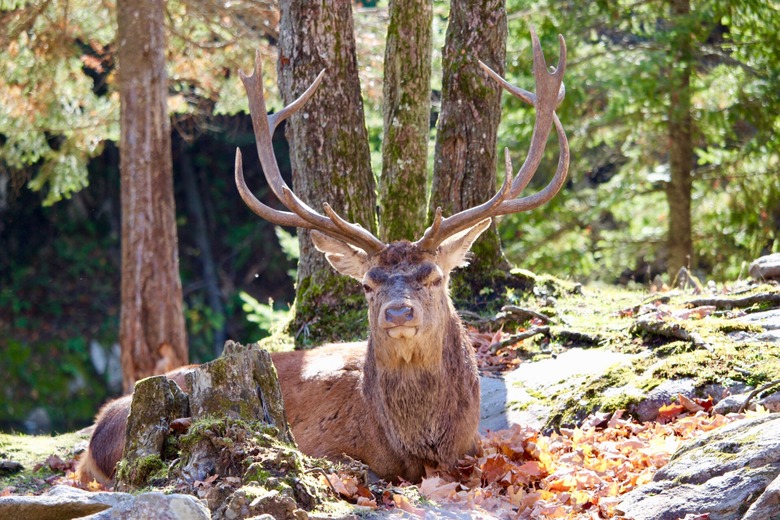How To Make An Ecosystem With A Shoebox
Elementary school students are often assigned the task of building an ecosystem in a shoebox. These projects are used to teach children the components of different ecosystems around the world, while informing them about conservation efforts and allowing them to explore their creativity and imagination. Ecosystems that are generally used in this assignment are rain forest, Arctic tundra, temperate and desert.
Step 1
Take off the lid of the shoebox and turn it upside down on a table. This will be used as the ground of the ecosystem. Glue the bottom part of the shoe box onto the lid so that it will stand up straight and can be used as a background for the ecosystem.
Step 2
Find pictures of your ecosystem in a magazine. Background images can also be found by searching the web for public domain photos or by using free stock photo websites.
Step 3
Cut out or print the background photos and glue onto the inside of the shoebox to be used as the background of your ecosystem.
Step 4
Spread soil in the lid of the shoebox. Soil should be representative of your chosen ecosystem. For deserts use sand and for rain forests use dark potting soil. Cover the entire area within lid with chosen soil.
Step 5
Place grass, rocks and branches in the soil to create the look of vegetation and surface objects in your ecosystem.
Step 6
Cut a small Dixie cup about an inch from the bottom. Color the bottom of the Dixie cup blue and press it into the soil. Fill with water to create a small pond or lake in your ecosystem.
Step 7
Take plastic animals, printed pictures of animals or cut out images of animals that naturally occur in your ecosystem and place them in different places inside the ecosystem. Pictures can be glued to the background and placed on toothpicks or Popsicle sticks and pushed into the soil or glued to the lid of the shoebox.
Things Needed
- Scissors
- Rulers
- Markers
- Glue
- Cardboard
- Shoebox
- Soil
- Magazines
- Plastic animals
- Grass
- Branches
- Rocks
- Dixie cups
- Colored paper
TL;DR (Too Long; Didn't Read)
Building a coastal ecosystem can easily be done by going to the beach and collecting sand and shells and seaweed for the bottom part of the ecosystem. This an inexpensive approach to building a shoebox ecosystem.
Cite This Article
MLA
Kinser, Joshua. "How To Make An Ecosystem With A Shoebox" sciencing.com, https://www.sciencing.com/make-ecosystem-shoebox-5755209/. 22 November 2019.
APA
Kinser, Joshua. (2019, November 22). How To Make An Ecosystem With A Shoebox. sciencing.com. Retrieved from https://www.sciencing.com/make-ecosystem-shoebox-5755209/
Chicago
Kinser, Joshua. How To Make An Ecosystem With A Shoebox last modified August 30, 2022. https://www.sciencing.com/make-ecosystem-shoebox-5755209/
